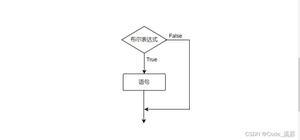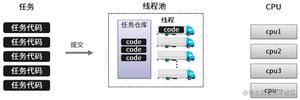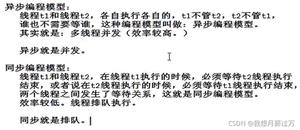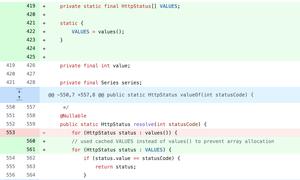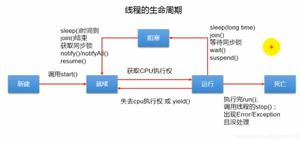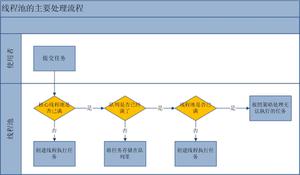java实现两个线程交替打印的实例代码
使用ReentrantLock实现两个线程交替打印
实现字母在前数字在后
package com.study.pattern;
import java.util.concurrent.CountDownLatch;
import java.util.concurrent.locks.Condition;
import java.util.concurrent.locks.Lock;
import java.util.concurrent.locks.ReentrantLock;
public class Demo2 {
private static Lock lock = new ReentrantLock();
private static Condition c1 = lock.newCondition();
private static Condition c2 = lock.newCondition();
private static CountDownLatch count = new CountDownLatch(1);
public static void main(String[] args) {
String c = "ABCDEFGHI";
char[] ca = c.toCharArray();
String n = "123456789";
char[] na = n.toCharArray();
Thread t1 = new Thread(() -> {
try {
lock.lock();
count.countDown();
for(char caa : ca) {
c1.signal();
System.out.print(caa);
c2.await();
}
c1.signal();
} catch (InterruptedException e) {
e.printStackTrace();
} finally {
lock.unlock();
}
});
Thread t2 = new Thread(() -> {
try {
count.await();
lock.lock();
for(char naa : na) {
c2.signal();
System.out.print(naa);
c1.await();
}
c2.signal();
} catch (InterruptedException e) {
e.printStackTrace();
} finally {
lock.unlock();
}
});
t1.start();
t2.start();
}
}
最后输出结果:
使用LinkedTransferQueue实现两个线程交替打印
实现字母在前数字在后
package com.study.pattern;
import java.util.concurrent.LinkedTransferQueue;
public class Demo3 {
private static LinkedTransferQueue<Character> linkedC = new LinkedTransferQueue<Character>();
private static LinkedTransferQueue<Character> linkedN = new LinkedTransferQueue<Character>();
public static void main(String[] args) {
String c = "ABCDEFGHI";
char[] ca = c.toCharArray();
String n = "123456789";
char[] na = n.toCharArray();
Thread t1 = new Thread(() -> {
for(char caa : ca) {
try {
linkedC.put(caa);
char a = linkedN.take();
System.out.print(a);
} catch (InterruptedException e) {
e.printStackTrace();
}
}
});
Thread t2 = new Thread(() -> {
for(char naa : na) {
try {
char b = linkedC.take();
System.out.print(b);
linkedN.put(naa);
} catch (InterruptedException e) {
e.printStackTrace();
}
}
});
t1.start();
t2.start();
}
}
输出结果:
使用synchronized实现两个线程交替打印
实现字母在前数字在后
package com.study.pattern;
import java.util.concurrent.CountDownLatch;
public class Demo4 {
private static CountDownLatch count = new CountDownLatch(1);
public static void main(String[] args) {
String c = "ABCDEFGHI";
char[] ca = c.toCharArray();
String n = "123456789";
char[] na = n.toCharArray();
Object lock = new Object();
Thread t1 = new Thread(() -> {
synchronized (lock) {
count.countDown();
for(char caa : ca) {
System.out.print(caa);
lock.notify();
try {
lock.wait();
} catch (InterruptedException e) {
e.printStackTrace();
}
}
lock.notify();
}
});
Thread t2 = new Thread(() -> {
try {
count.await();
} catch (InterruptedException e) {
e.printStackTrace();
}
synchronized (lock) {
for(char naa : na) {
System.out.print(naa);
lock.notify();
try {
lock.wait();
} catch (InterruptedException e) {
e.printStackTrace();
}
}
lock.notify();
}
});
t1.start();
t2.start();
}
}
输出结果:
使用LockSupport实现两个线程交替打印
实现字母在前数字在后
package com.study.pattern;
import java.util.concurrent.locks.LockSupport;
public class Demo5 {
private static Thread t1;
private static Thread t2;
public static void main(String[] args) {
String c = "ABCDEFGHI";
char[] ca = c.toCharArray();
String n = "123456789";
char[] na = n.toCharArray();
t1 = new Thread(() -> {
for(char caa : ca) {
System.out.print(caa);
LockSupport.unpark(t2);
LockSupport.park();
}
});
t2 = new Thread(() -> {
for(char naa : na) {
LockSupport.park();
System.out.print(naa);
LockSupport.unpark(t1);
}
});
t1.start();
t2.start();
}
}
输出结果:
以上是 java实现两个线程交替打印的实例代码 的全部内容, 来源链接: utcz.com/z/318183.html

